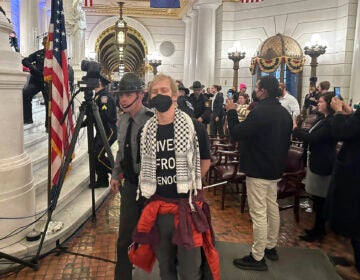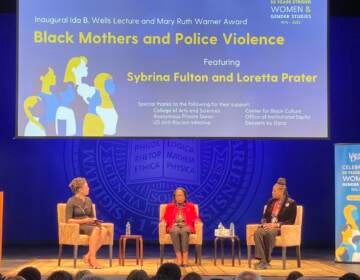Will a wave of protests bring change in suburban Philly too?
In this region, and throughout Pennsylvania, the unprecedented demonstrations have some seeing signs of a political sea change.
Listen 2:00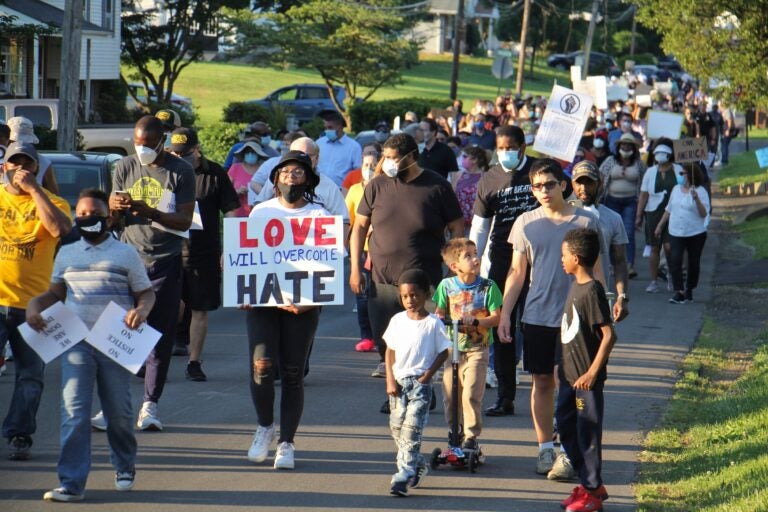
Hundreds march through the Linconia neighborhood of Bensalem Township to remember George Floyd and others who have died at the hands of the police. (Emma Lee/WHYY)
A church band welcomed about 100 people onto the basketball court of a small, green park Tuesday evening, just as the sun dipped behind the trees. A portable generator powered their instruments, as well as the sound system used by organizers, clergy, activists, and a police chief for more than an hour of remarks on how Bensalem Township ought to respond to the calls for racial justice that are sweeping the nation.
“This is not a moment, but a movement,” said Tiara Dwight, a lifelong resident of Bucks County. “We’re going to go for legislation this time. We need reform in writing.”
The demonstration began a few blocks away, in the parking lot of the Linconia Tabernacle in Trevose. Sponsored by the county chapter of the NAACP, the demonstration bore many of the hallmarks of the massive protests in Philadelphia and other cities: Black Lives Matter signs, demands for equipitable treatment for residents of color, and a full 8 minutes and 46 seconds of silent kneeling to commemorate the death of George Floyd in Minneapolis under the knee of a police officer.
But there were important divergences from big city protests. The diverse crowd included many young families and elders. The rhetoric, signs, and chants were less charged. People knew one another, exchanging greetings, and noted whenever a particularly eloquent speaker was a graduate of the local high school. Uniformed officers from the township’s police department walked with the marchers and stayed on hand for the duration of the event, occasionally nodding or applauding.
“We need your voices in the fight,” said Nick Christian, a youth pastor at a Friendship Baptist Church in Philadelphia church who grew up in Bensalem, addressing the police directly. “We need you to stand up and speak on our behalf in rooms that we are not invited in. We need you to condemn racism even when Black people are not around.”
Public Safety Director Fred Harran agreed. In remarks of his own, he stressed the police department’s history of working with local leaders, including the NAACP, which has a hand in police hiring decisions.
Bensalem is not usually a hotbed of political protest. But suburbs like this and small towns are seeing a surge in activism demanding racial justice. Dozens of demonstrations have been organized in communities outside Philadelphia, drawing hundreds, sometimes thousands of people out into the streets. And it’s hardly unique to this region: towns all across Pennsylvania are seeing the same thing, as are states in every part of the country. Estimates put the total number of actions at over 3,000 since Floyd’s death.
Academic researchers who track political organizing call the scale of the mobilizations unprecedented.
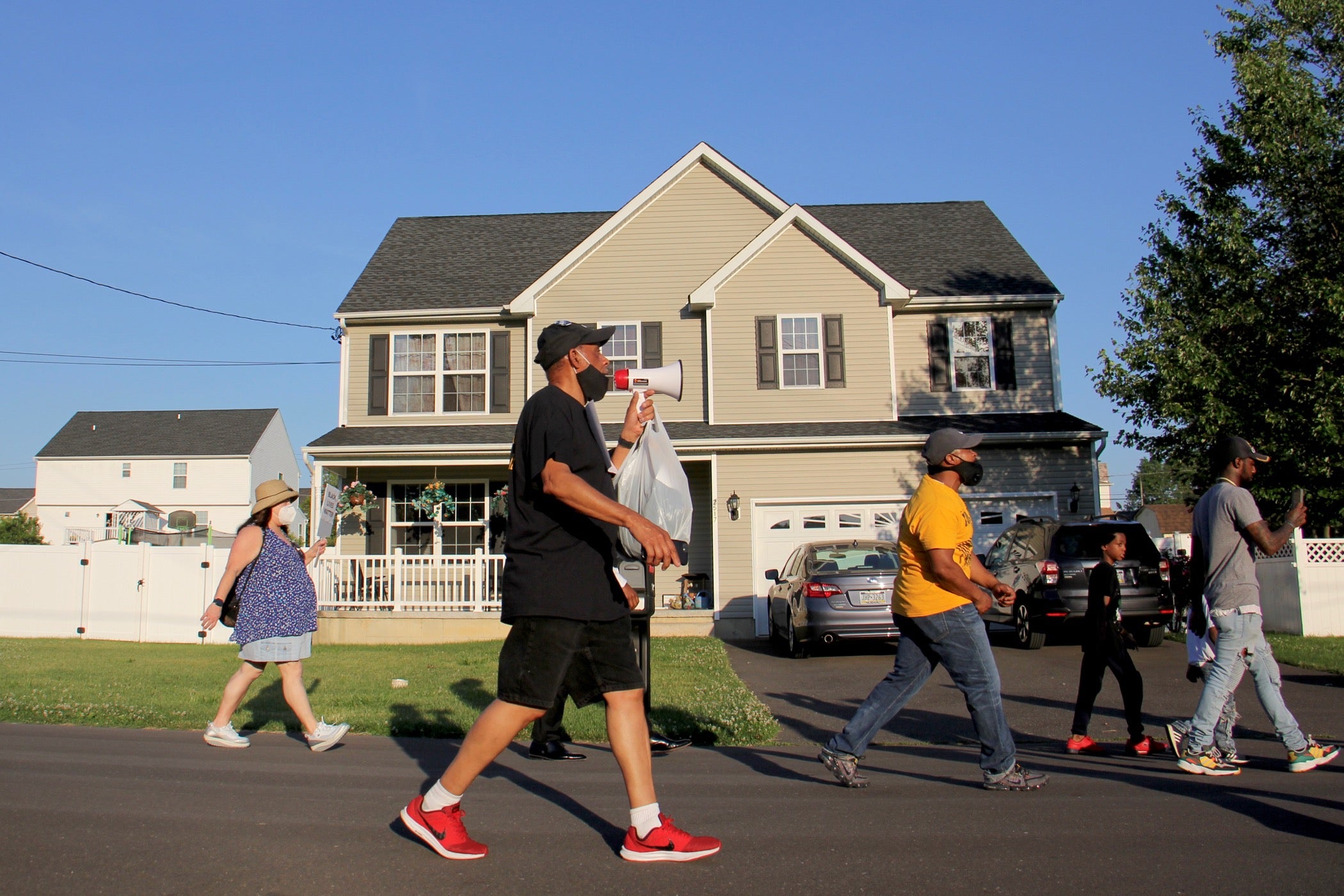
In the suburban streets
Many who attended the protests taking place in the last two weeks say they’ve never seen comparable crowds turn out in their communities.
“It’s truly a coalition of all races, all demographics, all ages,” said Carmina Taylor, who has lived most of her life in Montgomery County. She helped organize a demonstration outside the courthouse in Norristown last week, spurred by disparaging remarks from a county commissioner about Black Lives Matter. Hundreds were on hand, calling for the official’s resignation and reforms to the local criminal justice system.
Hundreds of people have shown up at demonstrations in towns throughout Montgomery County: in Souderton, Lansdale, and Pottstown, to name a few. The same has happened in Delaware County, and in South Jersey towns like Pennsauken. A demonstration in Phoenixville, Chester County, organized by a few high school students drew more than 2,000 people to Main Street, according to The Mercury.
It’s hardly just a Southeastern Pennsylvania thing, either. By last week, there had been rallies and protests in Allentown, Chambersburg, York, Reading, Bethlehem, State College, Erie, Harrisburg and Lewisburg. A map compiled by Pennsylvania Capital-Star reporter Elizabeth Hardison documented more than 100 separate actions, occurring in nearly every county in the state.
Posting on Reddit, a digital mapping analyst from the southwest tallied protests nationwide. Since May 25, according to the data set, there have been over 3,000 Black Lives Matter protests throughout the world, with the majority of them concentrated in the United States. National journalists have likewise marveled at demonstrations happening in some unexpected places, from small towns in Montana to islands in Maine to coastal villages in Alaska.
“It’s far outside of what we’ve seen in terms of the geographic spread of spontaneous protests of this kind, probably in U.S. history,” said Lara Putnam, who chairs the history department at the University of Pittsburgh, where she studies grassroots political organizing, with a focus on Pennsylvania.
Compared to other recent national movements like the Women’s March and the Tea Party protests, the recent Black Lives Matter actions have not only been more numerous, but better attended, according to Putnam.
“At each one, the number of people who have participated has been significant,” she said, pointing to Pennsylvania’s suburbs in particular.
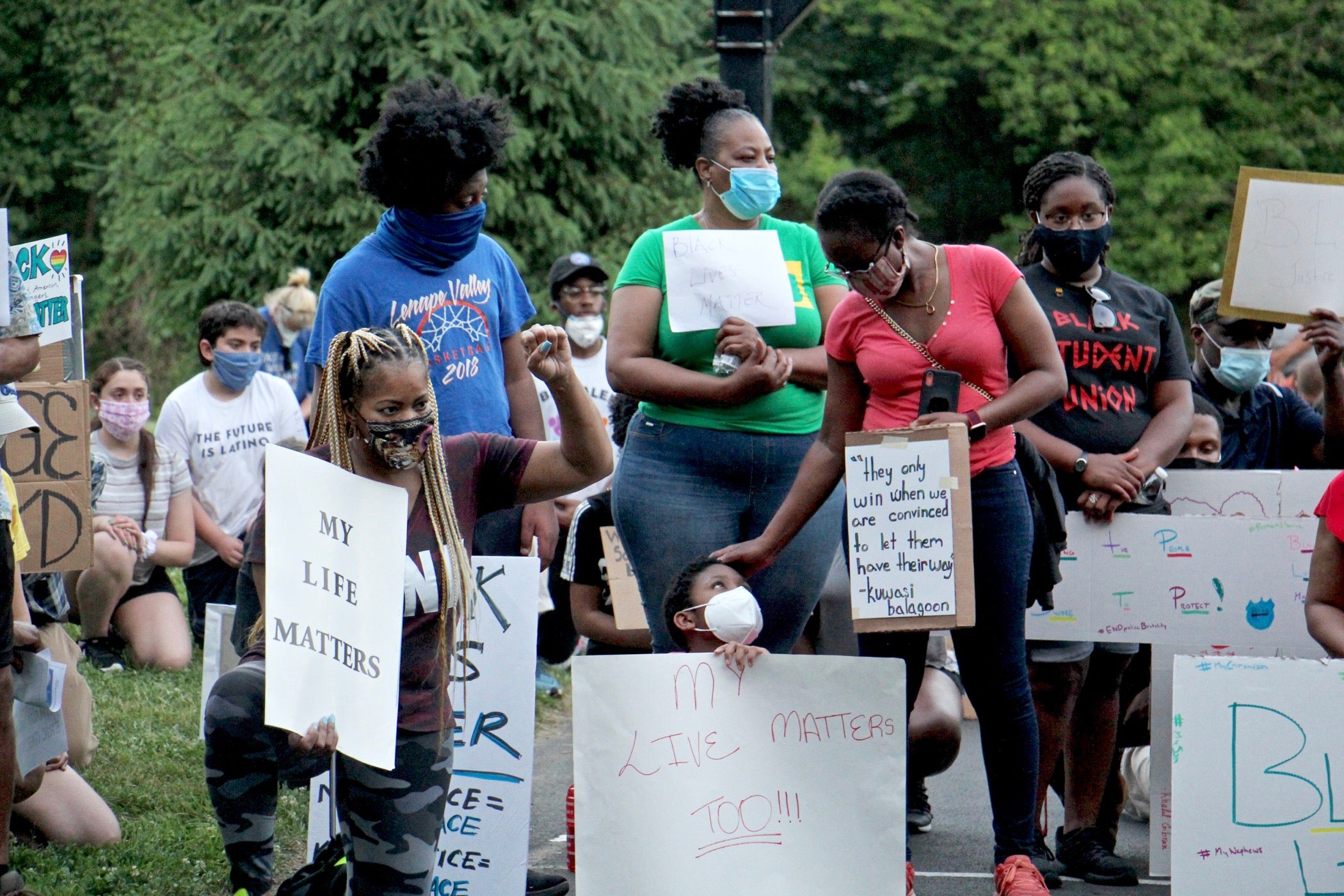
Policy or performance?
Not everyone is convinced the recent proliferation of protests amounts to a political sea change.
Andrea Lawful-Sanders is an activist and implicit-bias trainer who has spent decades working with school districts, community groups, and police departments in Montgomery and other nearby counties. She sees the sudden rush of Philadelphia suburbanites seizing the mantle of Black Lives Matter as potentially just a symbolic gesture to show that they aren’t out of step with a country that’s in an uproar.
“I believe that many of these small towns are now, for lack of a better term, ‘awakening’ to the fact that business as usual cannot continue the way that it has been,” Lawful-Sanders said.
In her experience, many of the communities outside Philadelphia purporting to champion progressive values do not have a record in line with the rhetoric when it comes to treatment of Black students and residents. Too often, Lawful-Sanders said, local reform efforts to modify policies that hit people of color especially hard have been fiercely and consistently opposed. She pointed to disproportionately high suspension rates of Black students in public schools, as well as high rates of traffic stops of black motorists. During her decades of advocacy for racial justice, slogans, platitudes, and civic-minded press releases have been common, substantive changes to local institutions much less so.
“Only time will tell if they’ll put out a joint statement of unity with the clergy, the departments and the school district, versus really putting some teeth into shifting the way they operate for all people,” Lawful-Sanders said of elected officials and residents in suburban communities.
“I just don’t believe they’re quite there,” she added.
One point of optimism Lawful-Sanders sees in the current movement is the force of young people in organizing and attending demonstrations. That’s something Putnam, the University of Pittsburgh professor, remarked on, as well.
“Especially in the suburbs and the smaller towns, it’s teenagers, usually high school kids, who are taking initiative to organize this,” Putnam said.
She believes the explosion in protests has already had a political impact, and will continue to for a while. Even in places where policy reforms might not take root, public perception is already shifting as the push against anti-Black racism and for racial equity is localized in places where it might have barely been part of the conversation.
“Standing here as a scholar,” said Putnam, “I think this uptick of these protests in spaces where these arguments are not taken for granted … that’s really impactful.”

Get daily updates from WHYY News!
WHYY is your source for fact-based, in-depth journalism and information. As a nonprofit organization, we rely on financial support from readers like you. Please give today.


